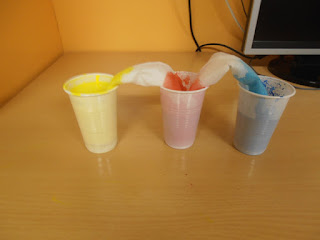- An egg .
- Some vinegar.
- A glass.
HOW TO DO IT
- Put the egg in the glass .
- Add some vinegar to the glass.
- Let it rest four two or more days.
PREDICTIONS
RESULTS
The shell of the egg is gone! Why? Because it is made of calcium carbonate and if we add vinegar this calcium changes its composition creating small particles of calcium, the vinegar becomes dark brown, and CO2 bubbles that we see in the glass.
As the shell is gone, the vinegar can enter the next part of the egg and it changes its size, it is bigger than a normal egg.
EGG'S SHELL (CALCIUM CARBONATE)
+
VINEGAR
=
CALCIUM + CO2 (BUBBLES) + BIGGER SIZE
OUR OPINION
We like this experiment because is funny and interesting.
By Dèlia, Marta and Xènia










